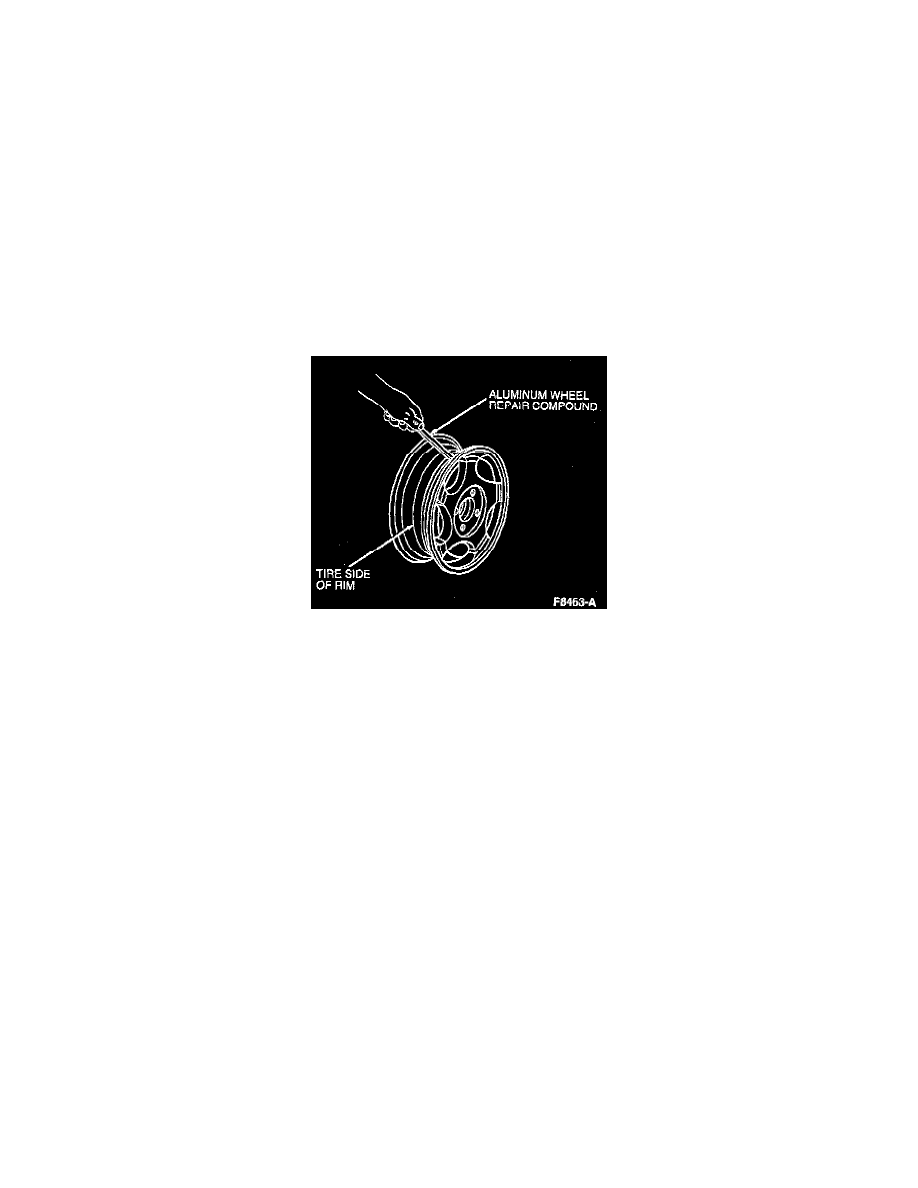Cougar/XR7 V8-4.6L VIN W (1997)

Wheels: Service and Repair
Bends/Dents
STRAIGHTENING WHEELS, RIMS OR COMPONENTS
Do NOT heat wheels in an attempt to soften them for straightening to repair damage from striking curbs, etc. The special alloy used in these
wheels is heat-treated, and uncontrolled heating from welding affects the properties of the material. Do NOT weld the wheels for any reason.
Hub Mounting Flange
Corrosion build-up can result in wheels sticking to the hub flange or front disc brake rotor flange after extensive service. To prevent this from
recurring once the wheels are removed, use the following procedure:
1. Clean rotor flange and wheel bore of corrosion with wire brush, steel wool or other suitable material.
2. Coat wheel bore with Disc Brake Caliper Slide Grease D7AZ-19590-A or equivalent meeting Ford specification ESA-M1C172-A. Do not apply
grease to lug nut seats or lug nut.
3. Install wheel on vehicle.
Leaks
NOTE: Wheel services that use welding, heating or peening are not approved. An inner tube is not an acceptable service for leaking wheels or tires.
DESCRIPTION
Slow leaks may occur in cast aluminum wheels because of porous wheel castings. Perform the following procedure to repair air leak. If the air
pressure in an aluminum wheel is found to be low, the following procedure should be performed before considering wheel replacement.
PROCEDURE
1. Remove the tire and wheel assembly and inspect the wheel for structural damage. If none exists, go to Step 2. If the wheel is damaged, replace.
2. With the tire mounted on the wheel, locate the air leak using a water bath or equivalent method and mark the location. Check the complete wheel
for possible additional leaks. When leaks are marked, dismount the tire marking the valve location on the tire for proper indexing.
3. On the tire side of the wheel, thoroughly clean the leaking area with Professional Choke and Linkage Cleaner E8AZ-19A501-AA or equivalent
meeting Ford specification ESR-M14P10-A or use sandpaper of approximately 80-grit to remove all contamination. Using the sandpaper, score
the surface of the wheel to improve adhesion of the sealer. Adequate area around the leak should be prepared to ensure covering the leak. If the
valve stem is close to the area, remove it.
4. Use a clean cloth to remove all cleaner or sanding dust.
NOTE: Do not use a torch containing oxyacetylene.
5. Heat the prepared area with Rotunda Heat Gun 107-R0300 or equivalent or propane torch until Aluminum Wheel Repair Compound
E7AZ-19544-A or equivalent meeting Ford specification ESA-M4G280-A flows. Apply the hot melt material over the prepared area using a
liberal flow and wiping action to ensure coverage of the leaking area. Service is most effective when heat is applied to the brake side of the wheel
and sealer is melted by heat in the metal.
6. Apply only enough heat to melt the sealer, then remove heat source. After servicing the leak, allow the wheel to cool until it can be handled safely.
CAUTION: Use caution when mounting the tire so as not to damage the sealer.
7. Index and assemble tire and wheel. Inflate tire to the recommended pressure as indicated on the tire pressure decal.
8. Repeat Step 2 to verify service.
9. When the service is completed, balance the assembly and install on vehicle.
Steel
